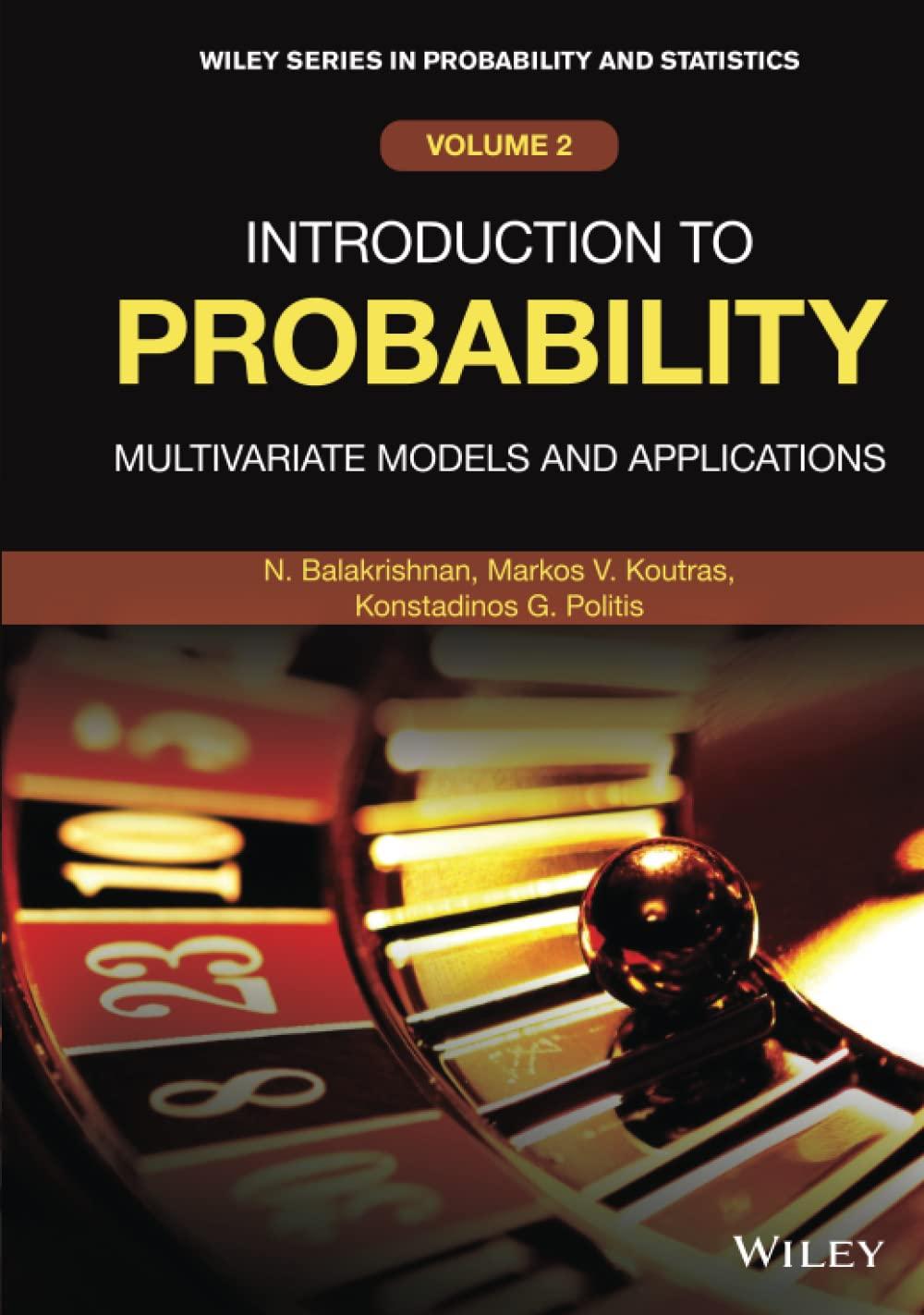A bus, which has a capacity of carrying 50 passengers, passes through a certain bus stop every
Question:
A bus, which has a capacity of carrying 50 passengers, passes through a certain bus stop every day at some time point between 10:00 a.m. and 10:30 a.m. In order to study the time the bus arrives at this stop, as well as the number of passengers in the bus at the time of its arrival, we use the following sample space
Ω = {(k, t) ∶ 0 ≤ k ≤ 50 and 10 ≤ t ≤ 10.5}, where k above denotes the number of passengers in the bus and t denotes the arrival time at the bus stop (in hours, expressed as a decimal number).
(i) Is the sample space Ω for this experiment countable or uncountable
(continuous)?
(ii) Write down explicitly each of the events below:
A1: the bus arrives at the stop at 10:10 a.m. carrying 25 passengers;
A2: the bus arrives at the stop at 10:10 a.m. with less than 25 passengers;
A3: the bus arrives at the stop between 10:10 a.m. and 10:15 a.m.;
A4: the bus arrives at the stop between 10:10 a.m. and 10:15 a.m., carrying at most 40 passengers.
(iii) Which, if any, of the events in part (ii) is a countable set?
(iv) Suppose now that, in order to describe the experiment of the bus arrival at the bus stop, we use pairs (i, ????), where i is the number of passengers that may get on the bus when it arrives, while ???? represents the time after 10:00 a.m. that the bus arrives at the stop. Write down a sample space Ω′ for this experiment.
Express each of the events in part (ii) as subsets of this new sample space.
Step by Step Answer:

Introduction To Probability Volume 2
ISBN: 9781118123331
1st Edition
Authors: Narayanaswamy Balakrishnan, Markos V. Koutras, Konstadinos G. Politis






